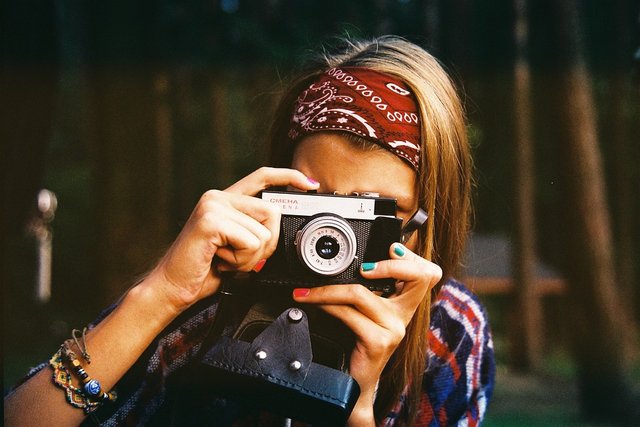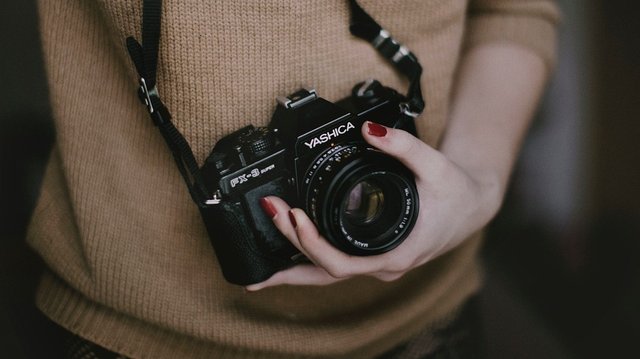Photographers - Supplement Your Steemit Income With Stock Photography!

Do You Even Shutterstock, Bro?
Photographers, if you're not uploading your work to stock websites, you could be missing out on some very meaningful passive income. It's great to get recognition and feedback here on Steemit, not to mention the rewards, but does your photo lose its value after that point?
I've been shooting stock for a couple of years, and while it hasn't set my wallet on fire, the extra passive income is very welcome, and just like the cumulative effect of building a following on Steemit, there is a cumulative effect of building a portfolio of stock photos online. A lot of potential stock photographers seem put off by the warnings of the industry being "too crowded" or "too competitive", but many of these warnings are coming from people who once made great livings from shooting stock, rather than the more casual shooter who would be very happy with an extra hundred bucks a month.
Shutterstock
There are lots of agencies but Shutterstock remains one of the most popular. It's also very straightforward, and reaches a huge audience. They're also non-exclusive, so if you upload to a Shutterstock portfolio, you're still free to upload to other non-exclusive agencies.
Shooting stock photography need not be a daunting prospect. You probably already have some high res shots on your hard drive with lots of licensing potential. And once you've signed up, it's as easy as dragging your files in, adding some keywords, and letting them do the rest of the work. If you're shooting models, you'll need them to sign a release form, but most other types of shots can be uploaded without that concern.
There are various different licenses, most of which award 25 cent per image. It might seem crumby, but it adds up fast, and once your earnings have totaled 500 dollars, you go into a higher tier, with a minimum of 33 cent per license. And as you can see here, Shutterstocks payouts have increased dramatically over the years.
Mobile
You don't need a pro camera either. Increasingly, mirrorless and compact cameras are being used to upload microstock. There's even an Upload feature on Shutterstocks mobile app. Imagine with a good camera-phone, you could upload images on the go, as you take them. (Side note: soon you'll be able to upload them to Zappl too and earn STEEM!)

So if I seem to be rather singing their praises, it's because my experience with Shutterstock has been fantastic, especially compared to some of the other agencies I've worked with. Shutterstock have a busy contributer forum where Shutterstock representatives regularly get involved to offer feedback and advice. They publish regular reports too, and you can analyse your portfolios data to see what's working best for you. Other features include an affiliate scheme, so you can make money through referrals as well as a Twitter account which hints at what images are in fashion at any given moment, and even occasional video training seminars for photographers.
I hope I've convinced you to take the step towards stock photography, and earning some extra pocket money while you sleep. It's a good feeling!
Register as a contributor with Shutterstock here.
Photos from Pixabay
If you already enjoy photography, this is a no-brainer!
Agreed completely!
This is fantastic! I am totally going to sign up for Shutterstock and Zappl. Didn't even know about Zappl! Cool! I have a ton of gorgeous photos just waiting to see the light of day. I am very excited. THANKS SO MUCH!!!
Please follow, I have a really cool post coming up next, I "teased" it at the end of my last post, which I am gonna do from now on.
: )
What size of portfolio, or number of photos do you think is necessary to really make something noticeable, say a few hundred dollars a month? 500, 5000 photos? I'm sure it depends on several factors.
Hi Nathan.
Thanks for your question, and you're right in your assumption that it depends on several factors, so there is no right answer. The usual point brought up on stock forums is quality vs quantity. I'd like to say quality is more important, but that's not entirely true. Some of my better photos have never sold at all, while some mediocre pics have sold quite well.
Figuring out demand isn't easy as most stock sites don't release exact figures on customer searches, but there are ways of gauging demand, and it's easy to compare this with the supply. I took this a step further when doing research and created a spreadsheet which factored in things like supply, ease of shooting, google trends, etc, ultimately awarding scores for various topics.
As you might expect, stock cliches scored very low. Things such as "hands shaking" are in copious supply, as are background textures, skies, sunsets. The highest scoring topics were always trending topics, be it fidget spinners, or a new diet fad. Using your imagination and creativity, you can extend this to things like scientific discoveries, or following the political zeitgeist. This all requires effort, but the potential rewards are highest using this approach.
You can also take a more passive approach, and still earn respectable money, just by uploading regularly. Efficiency and opportunity are key for me. Take a camera everywhere, even if it means buying a cheap backup and leaving it in your cars glove box. Then simply knowing what could sell will help. A monument or landmark, absolutely. Animals, for sure, especially if you know the exact breed. Same with flowers.
The most important thing is sticking with it. You can refine your approach as time goes on.
@condra, thank you so much for yor very thorough response to ky question. I have many thousands of photos that I have stored on my hard drive that i could be putting to work. Thanks for all the great advice.
turning your camera into income, nice!

Nice Posting! Just upvoted and followed you, can you please do the same for me?
Thanks a million!
Of course dude. If you comment on my posts when they're fresh, I always give an Upvote. Greets.
This is a good idea. I want to get a nice Canon again someday, and do more of this. I sold my 35 mm EOS outfit for close to $2000 awhile ago on eBay. I felt sorry for the guy who didn't understand where digital was going.
You can get AMAZING cameras now for very little :)
Great suggestion @condra! I'll try it Thank you :)
That sounds pretty amazing...Didnt know Shutterstock as a way to earn money...just knew that as a vast source of photos. Zappl is still in development i suppose (heard about Zappl on This Platform some weeks ago). You surely convinced me enough to join the Stock Site...Is that your refferal link coz i am signing up now with some Thanksgiving😉!!
Thanks for the advice. You are now being followed by @anothervoice .
Following you back. Cheers!
Great I guess I'll be seeing you around.
Ive tried it and never had any interest. . Maybe i should try again?
It took me three attempts to really get into it, but I believe it's worth it, especially if you're going to be taking photos anyway.
I have terrabytes of possible stock images from the last 10 years.... ill have to give it another shot
No desire. The last thing I would want is someone else to profit from my images for a one time licensing fee and use them how every they want. I would license for a fee + royalties (if used on products) or for a specific purpose for a one time fee like magazine publication. So I'm not against licensing as there is a lot of money in licensing your work if done the right and most profitable way but not at .25 an image. I make more posting on Steemit and retaining all of my rights than I would selling on stock on a microstock site.
The other problem is with the kind of photography I do, is some of it could be used in a way that might misrepresent the model.
If you have a very large library it could be a good source pf passive income. However I met a successful stock photo photographer and he told me "Shooting stock has ruined photography for me, now I see stock photo concepts everywhere I look, but it's not enjoyable anymore"
Sadly stock photos are not what it used to be since microstock came into play. At this point it's really competitive and the people making all of the money are the Microstock Websites. The photographers get paid so little these days, marketers come along pay nothing for the images and then sometimes profit heavily while the photographer got a puny one time fee. That's the downside.
The upside is if you have 10,000 boring but possible useful images sitting on your hard drive that you shot (pr want to make them) you can make some good passive income by putting them up on stockphoto websites. So for some people it's a good deal. Just mot as good as it used to be.